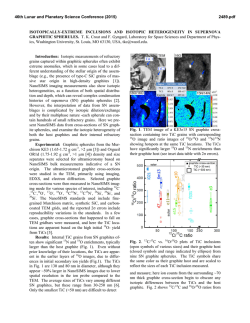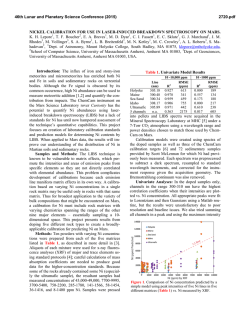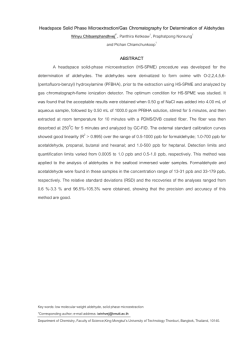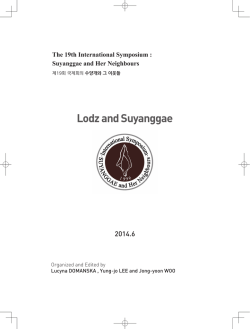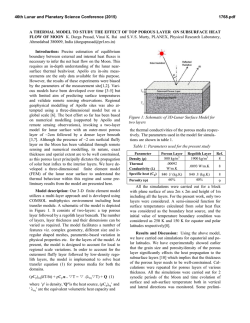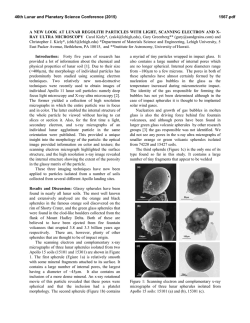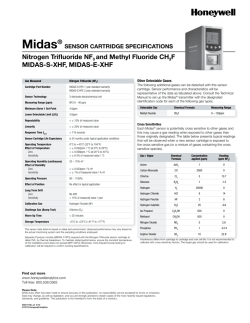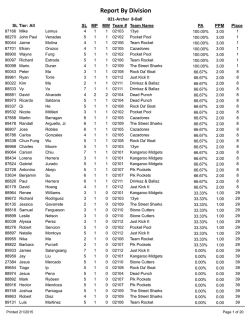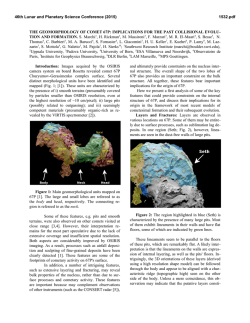
discovery of extraterrestrial component carrier phases in archean
46th Lunar and Planetary Science Conference (2015) 1864.pdf DISCOVERY OF EXTRATERRESTRIAL COMPONENT CARRIER PHASES IN ARCHEAN SPHERULE LAYERS FROM THE BARBERTON GREENSTONE BELT, SOUTH AFRICA. T. Mohr-Westheide1, J. Fritz1, W.U. Reimold1,7, C. Koeberl2,3, T. Salge4,8, A. Hofmann5, B. Luais6, D. Höhnel1, S. Özdemir2, and D. Mader2, 1 Museum für Naturkunde Berlin, Invalidenstrasse 43, 10115 Berlin, Germany. 2University of Vienna, 1090 Wien, Austria. 3Natural History Museum, 1010 Vienna, Austria. 4Bruker Nano GmbH, Berlin, Germany. 5Department of Geology, University of Johannesburg, Johannesburg, South Africa. 6CRPG-CNRS-Nancy, Université de Lorraine, 54501 Vandoeuvre-lès-Nancy, France. 7Humboldt-Universität zu Berlin, Unter den Linden 6, 10099 Berlin, Germany, 8Science Facilities, Natural History Museum, London, UK. E-mail: [email protected]; Introduction: Circa 3.47-3.2 Ga Archean spherule layers of the Barberton Greenstone Belt (BGB) represent the oldest known remnants of large bolide impacts onto Earth [1,2] and allow to investigate the early Archean impact record on Earth. Spherules in these layers are interpreted as molten impact ejecta and condensation products from impact plumes or ejecta that were melted during atmospheric re-entry [2,3]. Primary signatures preserved in the spherule layers may provide insights regarding the impact event(s) and the projectiles involved. Past research has shown that selected samples may carry ultra-high abundances of PGE indicative of the presence of anomalously high extraterrestrial component(s) (ETC) in excess of chondritic abundances. Inferences for very large projectile sizes responsible for these impact layers have been made on the strength of these data. Our research on ICDP BARB5 drill core intersections of spherule layers from the 3.26 Ga Fig Tree Group is focussed on the identification of the carrier phases of the ETC. Analytical methods: All samples were studied by transmitted and reflected light microcopy, electron microprobe analysis (EMPA) and scanning electron microscopy (SEM), including energy dispersive X-ray spectroscopy (EDX) at low voltage (6kV). Furthermore, instrumental neutron activation analysis (INAA) as well as XRD groundmass analyses of spherule layer samples in the BARB5 drill core has been carried out. For automated feature analysis, we have used a BRUKER QUANTAX EDS system. This method combines morphological with chemical classification in order to detect and classify minerals [4]. Grains were detected by grey-scale thresholds in backscattered electron (BSE) micrographs. Spectra were acquired by point measurements in the center of each grain or by scanning the complete grain area. A continuous section of the depth interval from 511.31 to 511.51 m was cut into 22 individual subsamples and analyzed for trace element contents by INAA at the University of Vienna, and by solution ICP-MS at CRPG-Nancy. Results: Four ca. 4 cm thick layers of densely packed, 0.3-2 mm sized spherules are separated by <1.5 cm thick shale bands in a 22 cm core interval (511.29-511.51 m). A further, 4 cm thick, spherule layer occurs at 512.30 m depth. Between the four layers and the additional spherule layer sample occurs a sequence of cm- to dm-wide shale and chert layers. Cross-lamination is observed in the interval between layers 1 and 2. This spherule-layer-bearing interval stratigraphically occurs in the sequence hosting previously studied spherule layer S3/S4 or could represent a different unit not previously been recognized. The chemical compositions of the spherules have been almost completely changed by alteration, but some primary characteristics, including the total amount of spherules, the spherule sizes, their shapes, and some mineralogical features are preserved. Spherules on top of layer 1 are strongly sheared; generally un- or only slightly deformed spherules compose layers 2-4 and the additional spherule layer beneath. Statistical analysis of the apparent spherule size did not show sorting of the individual spherule beds. The average spherule size in the spherule intersection at 512.30 m depth is, at best, only marginally increased in comparison to the 4 spherule layers above (average values of the spherule size for SL1: 0.75 mm; SL2: 0.72 mm; SL3: 0.79 mm; SL4: 0.87 mm; SL at 512.30 m depth: 0.99 mm). Overall, spherules in all layers are invariably diverse in size (0.27-2.03 mm) and do not show gradation – in contrast to studies of spherule occurrences in this stratigraphic interval from other locations [5]. All spherule beds are pervasively altered to quartzphyllosilicate-K-feldspar-Mg-siderite-barite-calcite assemblages. In particular, XRD groundmass analysis revealed quartz, muscovite, K-feldspar, chlorite, siderite, dolomite/ankerite, and pyrite as the main matrix mineral assemblages in the BARB5 spherule layers. Primary characteristics include the presence of Nirich chromium-spinel (Ni-Cr-spinel). Sulfide mineralization is clearly of secondary origin. Only the upper layers 2-4 contain Ni-Cr-spinel. SEM-EDX analyses indicate that the Ni-Cr-spinel has distinct zonations with respect to Fe, Ni, Zn, and Cr contents. Spinel fragments of shattered crystals frequently show marginal Zn-enrichment on all fragments – indicative of post-depositional alteration. INAA of spherule layer and shale show distinctly elevated contents of siderophile elements (Ni, Co, Ir, 46th Lunar and Planetary Science Conference (2015) and Os), and Cr and Au over the entire section (i.e., in spherule material and interbeds). Lowest contents were found in bottom layer 1, with ca. 0.3-10 ppb Ir, 7-22 ppm Co, 80-730 ppm Cr and 120-470 ppm Ni. Highest amounts were found in spherule layer 2 with ca. 600 ppb Ir, 250 ppm Co, 3500 ppm Cr and 3800 ppm Ni, and at the top of layer 3 with 730 ppb Ir, 530 ppm Co, 3200 ppm Cr and 5400 ppm Ni. In other parts of the section Ir is in the 150-400 ppb range. High abundances of the siderophile elements and PGE are thought to reflect the extraterrestrial component, which locally exceeds the contents of these elements in chondritic meteorites [cf. 4]. SEM-EDX at high spatial resolution identified local areas of PGE enrichment with Ni-Cr-spinel clusters. They are associated with 600-1400 nm-sized PGE-rich metal alloy and sulfarsenide phases. PGE-phases within Ni-Cr-spinel represent sub-micro-nuggets of Pt metal alloyed with minor amounts of Ir, Os, Ru, Pd, and/or Rh, but also invariably with significant Ni and Fe. Platinum and Ni are dominant with more than 40 at% each. PGE-phases in the matrix between internally broken Ni-Cr-spinel grains contain varying amounts of sulphur and arsenic (possibly as the result of secondary overprint). ICP-MS data of spherule layers also indicate Cr-correlated enrichment in moderately siderophile/volatile elements (Ge, Ga, V, etc.), e.g., 3.5-4.1 ppm Ge that is significantly higher than 2.4 ppm Ge in a shale layer and the terrestrial crustal average of 1.5 ppm Ge. Up to 6.8 ppm Ge is locally found in the strongly sheared spherules of layer 1. High Ge contents hosted by Ni-Crspinel or resulting from fluid-related metamorphism have to be evaluated. Interpretation: The presence of five closely spaced spherule beds separated by < 1.5 cm thick beds of fine-grained siliciclastic sediment, one of which shows cross-lamination, could be suggestive of aquatic deposition after a single impact event, with multiphase currents affecting/interrupting sedimentation. Our petrographic and geochemical findings indicate a strong hydrothermal overprint of all lithologies in the studied drill core section. The primary mineralogical composition of the spherule layers is completely altered; only zircon and Ni-Cr-spinel are preserved as primary phases. Ni-Cr-spinel contains systematic variations in major element composition from core to rim (see also [7]) and unusually high Ni (and also V) concentrations compared to terrestrial chromiumspinel (also [6,7]. The observation that only one type of Ni-Cr-spinel occurs in a given cluster but that individual clusters have different spinel populations could indicate that melt of different compositions formed at spatially separated places in the vapour plume? High resolution SEM-EDX studies (feature analysis) identified Ni-Cr-spinel as the long-sought carrier phase for the extraterrestrial signature in Archean 1864.pdf spherule layers from the Barberton Greenstone Belt. Primary PGE+Ni,Fe alloys hosted by Ni-Cr-spinel, are suspected to be directly derived from the projectile or represent condensates from the vapor plume, whereas PGE sulfarsenides could also be the result of secondary alteration by S rich solutions. This micro-nugget effect appears to be responsible for the local, anomalous enrichment of siderophile elements and PGE in excess of meteoritic abundances. The question remains whether these PGE particles are directly derived from the projectile or are condensation products from a vapor plume. In conclusion, local enrichment of Ni-Crspinel in BARB 5, comprehensive secondary overprint due to alteration and/or metamorphism, and a lack of extensive clastic component are indicated. Evaluation of the complete data base of Ir abundance in spherule layer samples in the literature yielded averaged Ir values from 0.1 to 1518 ppb for S2 (avg. 116 ppb), 0.6-2730 ppb for S3 (avg. 164 ppb), 7450 ppb (avg. 128 ppb) for S4, and 0.3-735 ppb (avg. 290 ppb) for BARB5. These Ir concentrations are of equivalent magnitude as those used by [8] for estimating Archean bolide/projectile sizes, and still suggest a 30-40% chondrite component, on average, for these layers. However, the current study has indicated that Ir concentrations in the spherule layers of the BARB5 core are the result of a heterogeneously distributed meteoritic component (Ni-Cr-spinel, PGE mineralization) due to primary heterogeneous fall-out from the vapor plume, besides having been subjected to secondary processes (e.g., dilution of locally derived material as previously assumed by other authors, alteration and metamorphic overprint). Identifying the ETC has major implications for the further evaluation of the Archean impact record. The heterogeneous incorporation of meteoritic component due to primary heterogeneous fall-out from the vapor plume must be taken into consideration in any attempt to estimate the global fallout of ETCs and, thus, to constrain the sizes of projectiles and the impact magnitude for these Archean events. Furthermore, it can not be excluded either that secondary effects, such as hydrothermal alteration and metamorphic overprint, may have affected the primary PGE and siderophile element abundances of spherule deposits. References: [1] Lowe D. R. et al. (1989) Science, 245, 959-962. [2] Lowe D. R. et al. (2003) Astrobiology, 3, 7-47. [3] Johnson B. C. and Melosh H. J. (2014) Icarus, 228, 347-363. [4] Salge T. et al. (2013) Proc. 23rd IMCET, Turkey. 357-367. [5] Koeberl C. and Reimold W. U. (1995) Precambrian Research, 74, 1-33. [6] Krull-Davatzes et al., (2012) Precambrian Research, 196-197, 128-148. [7] Byerly G. R. and Lowe D. R. (1994) Geochim. Cosmochim. Acta, 58, 3469-3486. [8] Kyte et. al (2003) Geology, 31, 283286.
© Copyright 2025
